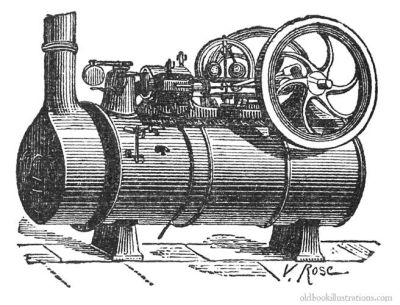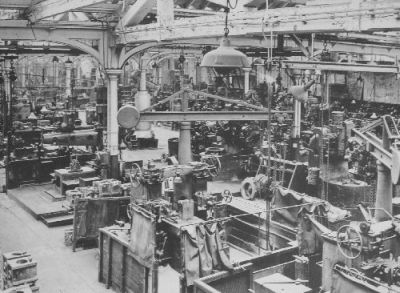The Industrial Revolution began in England, then spread throughout Europe and then North America during the late 18th and early 19th centuries when the life of ordinary people was changed dramatically, forever, by a series of engineering inventions and industrial achievements allowing industry to develop so fast that society could barely keep up.
The ultimate goal of the Industrial Revolution was to rely less on human labor in manufacturing processes, and to alter the industrial steps that used to be powered by Man into another form that is powered by machines, which was an idea that occupied the minds of engineers and industrialists for many years before. This dream came true at this time thanks to a number of engineering inventions and discoveries. On top of these discoveries was the discovery of steam power and the invention and development of the steam engine.

Steam power originally developed slowly over a period of several hundred years, progressing through expensive and fairly limited devices in the early 17th century, until it reached to actually practical applications at the beginning of the Industrial Revolution. The steam engine was one of the most important technologies of the Industrial Revolution. It was a simple device that used boiling water to create mechanical motion to be utilized in useful work.
The steam engine was used in many industrial settings, especially mining, where the first engines pumped water from deep workings. Early mills had run successfully with water power, but by using a steam engine a factory could be located anywhere, not just near water. Water power varied with the seasons, and was not available at times due to freezing, floods and dry spells.
In 1775, James Watt formed an engine-building and engineering partnership with the manufacturer Matthew Boulton. The partnership of Boulton and Watt became one of the most important businesses of the Industrial Revolution and served as a kind of creative technical center for much of the British economy. The partners solved technical problems and spread the solutions to other companies. Similar firms did the same thing in other industries, and were especially important in the Machine Tool Industry.
These interactions between companies were important because they reduced the amount of research time and expense that each business had to spend working with its own resources. The technological advances of the Industrial Revolution happened more quickly because firms often shared information, which they then could use to create new techniques or products.

From mines, to mills, steam engines found many uses in a variety of other industries. The introduction of steam engines improved productivity and technology, and allowed the creation of smaller and better engines. After Richard Trevithick's development of the high-pressure engine, transport applications became possible, and steam engines found their way to boats, railways, farms and road vehicles. Steam engines are an example of how changes brought by industrialization led to even more changes in other areas.